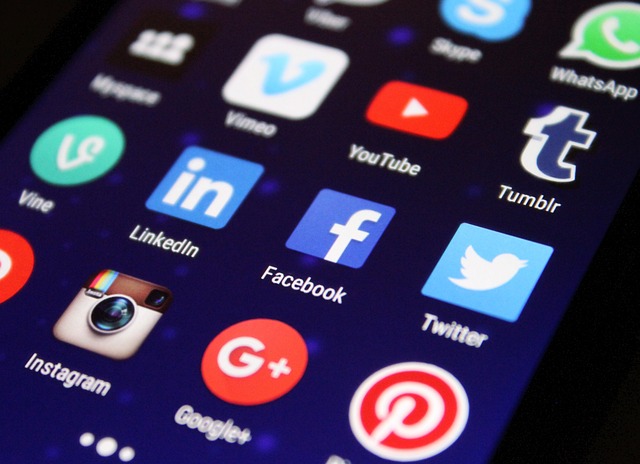A New Front Page: Social Media as the First Stop for News
Where Breaking News Breaks First
The days of waiting for the evening news or refreshing a news website are long gone. Today, platforms like Twitter/X, TikTok, and Instagram have become the first places many people turn to when news breaks.
- Twitter/X still serves as a real-time update hub for journalists, eyewitnesses, and official sources
- TikTok has evolved into a major source of awareness—especially for Gen Z—where firsthand videos of events often go viral before traditional outlets catch up
- Instagram curates quick-slide summaries and story coverage that spread news visually
This shift places social media at the center of news discovery, often faster than established newsrooms can respond.
From Prime Time to Real Time
The move from traditional media to mobile-first platforms marks a profound shift in how people gather information:
- Mobile apps dominate the news experience—instant notifications, live content, and reaction-based updates are the norm
- Traditional news outlets now compete within social apps for attention alongside influencers and citizen reporters
- Real-time accessibility is prioritized over in-depth analysis
The 24/7 accessibility of information reshapes expectations—if a story isn’t on your feed, did it even happen?
News in Fragments
While real-time delivery is powerful, it often comes with a cost: fragmentation. The news cycle in 2024 is rapid, disjointed, and user-curated.
- The same story can appear vastly different depending on who shares it and what platform it appears on
- Context is often lost in snippets, trending hashtags, and platform-specific formats
- Viewers piece together facts from multiple clips, tweets, and comment threads—sometimes accurately, sometimes not
In this new news landscape, the headline isn’t just what’s written—it’s what’s seen, shared, and reposted first.
News by the People, for the People
The news cycle no longer belongs to the big networks alone. In 2024, everyday people with a phone and a signal are breaking stories before journalists ever hit the ground. From protest footage to instant reactions during unfolding crises, citizen journalism isn’t just a supplement—it’s a primary source.
This direct line to the audience bypasses traditional gatekeepers entirely. That’s a double-edged sword. On one hand, it decentralizes power and gives voice to underrepresented communities. On the other, it opens the floodgates to unverified information, opinion posed as fact, and manipulated narratives that spread faster than corrections ever could.
Influencers, vloggers, and niche creators now act as informal correspondents, especially among younger audiences who trust personalities over institutions. Their reach can rival—sometimes exceed—that of news bureaus. But with this influence comes responsibility, and not everyone is equipped for it.
In this setup, context is everything. A single clip can either illuminate or mislead depending on framing. Real-time sharing amplifies not just truth, but confusion. For audiences, the challenge is knowing when what you’re seeing is raw clarity—or just noise in high definition.
The Double-Edged Sword of Speed
Social media moves fast—faster than traditional newsrooms ever could. That speed has its benefits. Breaking stories can reach millions within minutes. On-location footage, eyewitness reports, and live tweets provide raw, early insight. Public officials are held accountable quicker. When it works, it’s truth hitting the timeline in real time.
But the same velocity that powers transparency also fuels chaos. False stories travel just as fast—sometimes faster. A poorly verified post can go viral before anyone thinks to ask if it’s real. By the time fact-checks surface, the damage’s done. Screenshots live longer than corrections.
Platforms have tried to catch up. Labels, warning flags, fact-checking partnerships—they help, but they’re slow. Truth may take a few hours. Lies only need seconds. Algorithms, built to chase engagement, rarely pause to question accuracy.
We’ve seen this go sideways more than once. A fake headline tied to a natural disaster triggered mass panic before officials could step in. Footage from an old protest resurfaced during a new conflict—misattributed, miscontextualized, and widely believed.
This is the trade-off. We get speed. But we also get mess. Until platform guardrails catch up and users check before sharing, the news cycle will keep racing ahead—facts not always in the lead.
Algorithm-Driven Narratives
Scroll long enough and social media starts to feel less like a mirror and more like a funhouse. What shows up in your feed isn’t just a reflection of the world—it’s a calculated outcome of what platforms think you’ll click, share, or argue about. Algorithms prioritize engagement, not accuracy. That means emotionally charged posts, polarizing headlines, and viral misinformation often float to the top.
Who you follow sets the story you see. Two people can live in the same city and live in entirely different information realities. This personalization creates echo chambers—tight loops of similar voices and opinions that reinforce themselves. That’s not just annoying; it’s dangerous. Once a false story catches fire, even if it’s corrected later, it leaves a scar. Retractions get no traction.
The system isn’t neutral. Platforms benefit from outrage and virality. Content designed to inform often loses to content designed to provoke. The result? Public opinion shaped more by engagement metrics than verified facts. In this ecosystem, perception becomes its own kind of reality—and it sticks.
The Business of News on Social
Legacy media didn’t ignore the shift—they scrambled to survive it. Some leaned in. Others clung to old models and hoped the storm would pass. The truth? It didn’t. Social platforms became the front lines for news, and traditional outlets had to play catch-up.
The smart ones adapted. You’ll see headlines optimized for swipes and shares, not broadsheets. Article links now come with autoplay clips, punchy captions, and sleek vertical formatting. Breaking news is live-tweeted before it’s written. Reporters are also creators now, straddling the line between journalist and influencer. Engagement is the metric, and speed is currency.
But the business side hasn’t caught up as cleanly. Paywalls frustrate casual readers used to free feeds. Ad fatigue hits hard when every scroll is monetized. Some outlets chase subscriber models, others go heavy on programmatic ads. Few get the balance right. Add in shrinking attention spans and rising expectations for on-the-go coverage, and it’s clear: the traditional revenue playbook is under serious pressure.
And beneath it all, there’s a quiet war. Journalism wants to inform. The algorithm wants to entertain. That tension shows up in the tug-of-war between solid reporting and viral soundbites. It’s not always the best-researched piece that wins—just the most clickable one. Real journalism is still out there. But it’s fighting for your attention, one swipe at a time.
The Audience as Editor
Social media no longer treats its users as passive consumers of content. In today’s news ecosystem, audiences actively participate in shaping, challenging, and amplifying stories in real time.
News as a Collective Discussion
News doesn’t trend unless people talk about it. Comment sections, threads, and real-time public analysis have transformed each news story into a conversation—sometimes outpacing the original report in reach and impact.
- Comment sections often become forums for debate, clarification, and emotional response
- Hashtag threads on platforms like X (formerly Twitter) build timelines of events from multiple perspectives
- Influential voices can elevate little-known issues into national headlines
The Ripple Effect of Public Sentiment
Public reaction on social media can move faster than official responses—and its influence is measurable.
- Corporate reputations hinge on social reaction: a viral backlash can spark policy changes or public apologies
- Politicians monitor trending discussions to adapt talking points or shift legislative priorities
- Hashtag campaigns can drive real-world outcomes, from product recalls to protests
When the Conversation Becomes the News
Sometimes, the audience’s reaction is the story. Community discourse and sentiment now play a major role in what gets reported next.
- Social response often dictates follow-up coverage by traditional outlets
- Platforms like Reddit and TikTok spotlight stories ignored by mainstream media
- Public framing of a story can tilt its tone, direction, or even its factual focus
Social media didn’t just democratize who tells the news—it expanded who edits it, frames it, and decides what stays relevant.
Staying Informed in the Chaos
In a time where news breaks on apps, not evening broadcasts, staying informed means doing more than just scrolling. It requires active participation, a critical eye, and the ability to recognize signal from noise. Here’s how to navigate the modern newsfeed with clarity.
Know Who and What to Trust
Not all sources are created equal—and in a world where anyone can publish, it’s easy to stumble on misinformation posing as fact.
- Stick with outlets that have a track record of accuracy and accountability
- Watch for anonymous posts, unsourced claims, or screenshots without links
- Validate with official sources: public institutions, verified reporters, or primary documents
Check Before You Share
Even if something feels true, take a moment to cross-check before boosting it further. Social media thrives on speed, but truth takes time.
- Look for multiple sources confirming the same information
- Be wary of emotional headlines designed to spark outrage
- Use reverse image search to verify photos and videos
Watch for Red Flags of Fake News
Recognize common patterns used to manipulate or mislead:
- Headlines in all caps or loaded with urgent language
- Posts with no byline, date, or context
- Slanted coverage that only presents one side with zero nuance
Media Literacy Isn’t Optional Anymore
As social platforms increasingly shape our worldview, media literacy has become a necessary life skill—something worth teaching, learning, and modeling.
- Learn how algorithms influence what you see (and don’t see)
- Identify confirmation bias in your own behavior
- Understand that virality ≠ validity
Stay Curious, Not Cynical
Being critical of your media intake doesn’t mean tuning out completely. It means being thoughtful, cautious, and open to seeing the full picture. Spotting the nuance is where real understanding begins.
Related resource: Weekly Media Highlights: Key Stories You Need to Know
Final Word
Social Media: Not Just the Messenger
For millions today, social media isn’t just a supplement to traditional news—it has become the primary source. News no longer arrives exclusively via anchors or front pages. It’s discovered mid-scroll, sandwiched between memes and influencer updates, often shared by peers before publishers.
- Traditional journalism is no longer the gatekeeper
- Breaking stories frequently surface first on social platforms
- News unfolds in real time—sometimes before facts are verified
Power, Reach, and Risk in Every Scroll
Social platforms hold immense influence. A single post can spark global outrage, seed misinformation, or mobilize social movements. With this power comes unintended consequences:
- Viral impact: A trending story shapes public opinion instantly
- Speed vs. accuracy: Falsehoods can travel faster than corrections
- Visibility is currency: Emotion and controversy often outperform nuance
Who Writes the Headlines Now?
In this new cycle, the question isn’t just who publishes the news—it’s who amplifies it. Everyone plays a role, from the algorithm that boosts a video to the user who hits the retweet button.
- Algorithms decide what rises, often based on engagement
- Individual shares act as endorsements, whether intentional or not
- The line between consumer and co-creator of news is increasingly blurred
Staying informed in this media landscape means more than consuming content; it requires questioning what we see, being aware of who is sharing it, and understanding why certain voices get more visibility than others.




